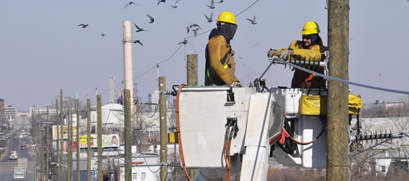
The new investment, which will be an addition to the previously announced $1.12bn investment plan, will allow the utility to continue to modernize its infrastructure by launching the second phase of Energy Strong.
Aimed to withstand storms, improve reliability and significantly enhance resiliency, the proposed program is subject to approval by the New Jersey Board of Public Utilities (BPU).
The second phase of Energy Strong involves raise critical electric and gas equipment in flood prone areas; modernizing aging electric and gas stations; installation of stronger poles and wires to reduce wind and tree damage; and deploy advanced technology to quicken restoration.
It also involves construction of additional pipes to distribute natural gas to enhance reliability and improving PSE&G’s customer service.
PSE&G president and COO Dave Daly said: “Our electric infrastructure has served us well, yet it is aging and needs replacement.
“The next phase of Energy Strong will mean less frequent outages, faster restoration for customers who experience outages, better estimates of restoration times, improved customer service and improved worker safety.
“And, building greater redundancy in our gas system will help ensure that we can deliver warmth in winter despite supply curtailments that can impact our system.”
PSE&G said that the Energy Strong program is expected to create about 3,150 jobs annually.
About $1.5bn of the planned $2.5bn investment program is allocated for electric improvements with while the remaining $1bn will be used for gas. The firm plans to commence work in March 2019.
As part of the Energy Strong II program, PSE&G will invest $428m to raise and harden 14 stations and eliminate two stations in flood zones; $478m to rebuild 15 outdoor stations; $345m to upgrade 475 miles of circuits; $145m to upgrade to smart grid technologies and $107m to create an advanced distribution management system.
Additionally, the firm will invest $863m to add redundancy to the gas distribution system to ensure more reliable service, and $136m to modernize seven natural gas metering stations, including two located in flood zones.






